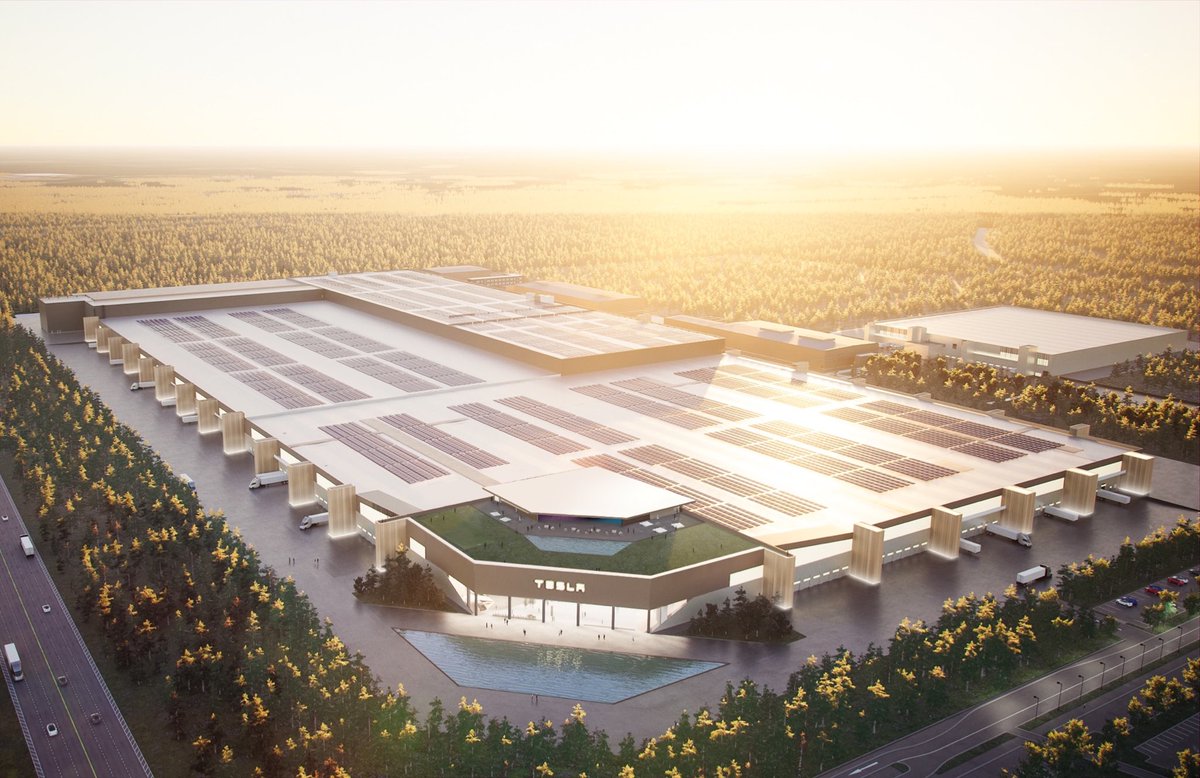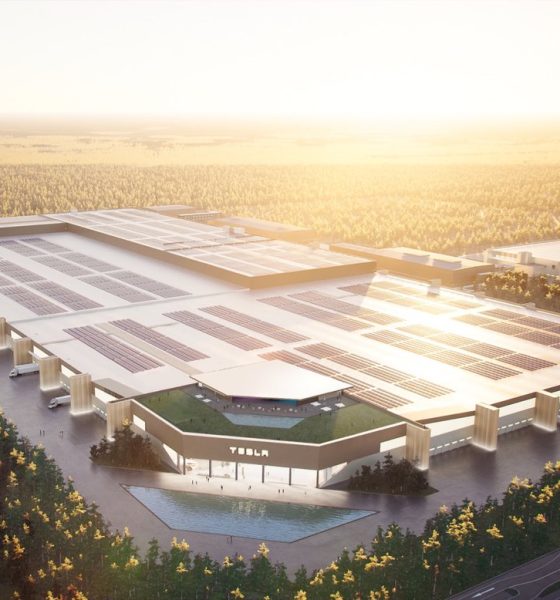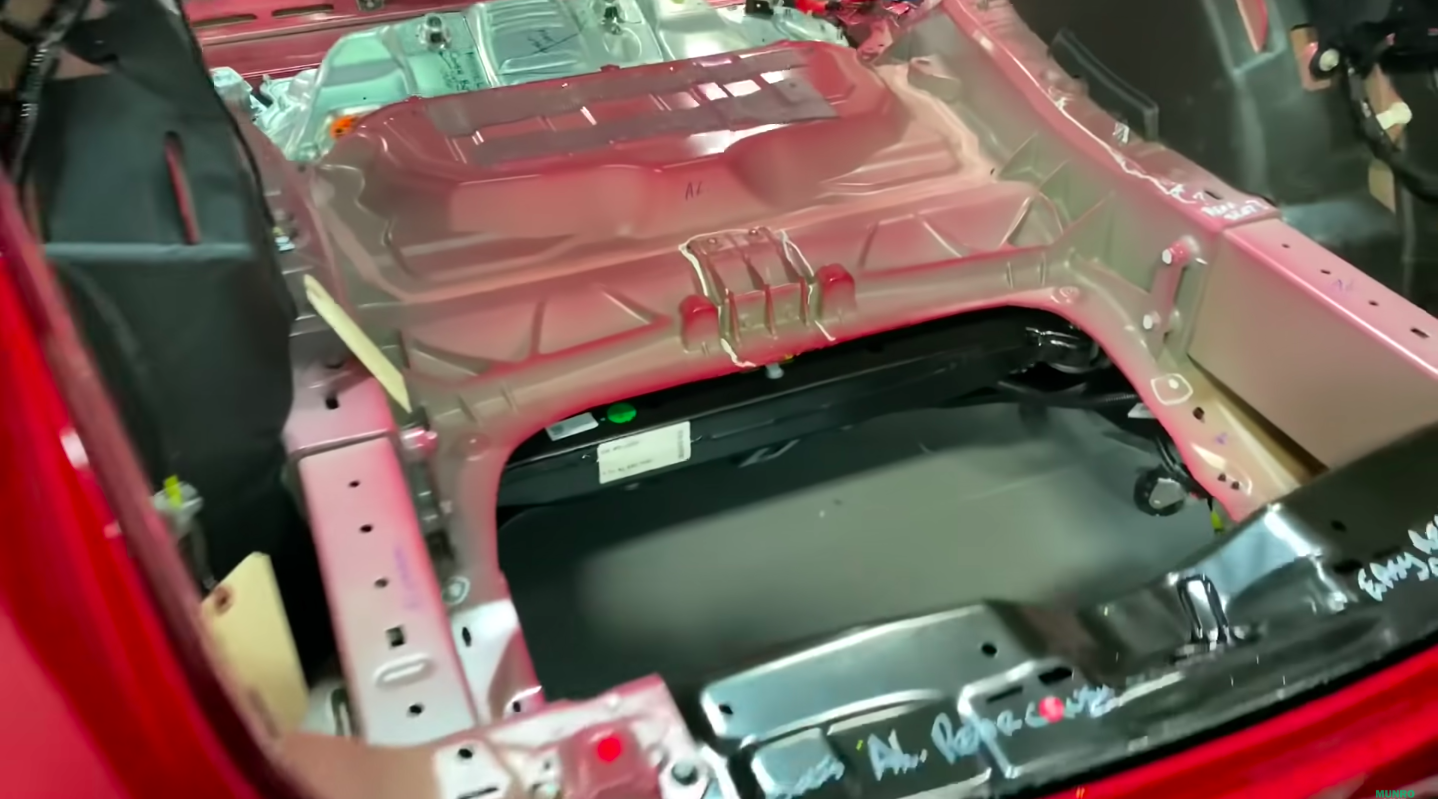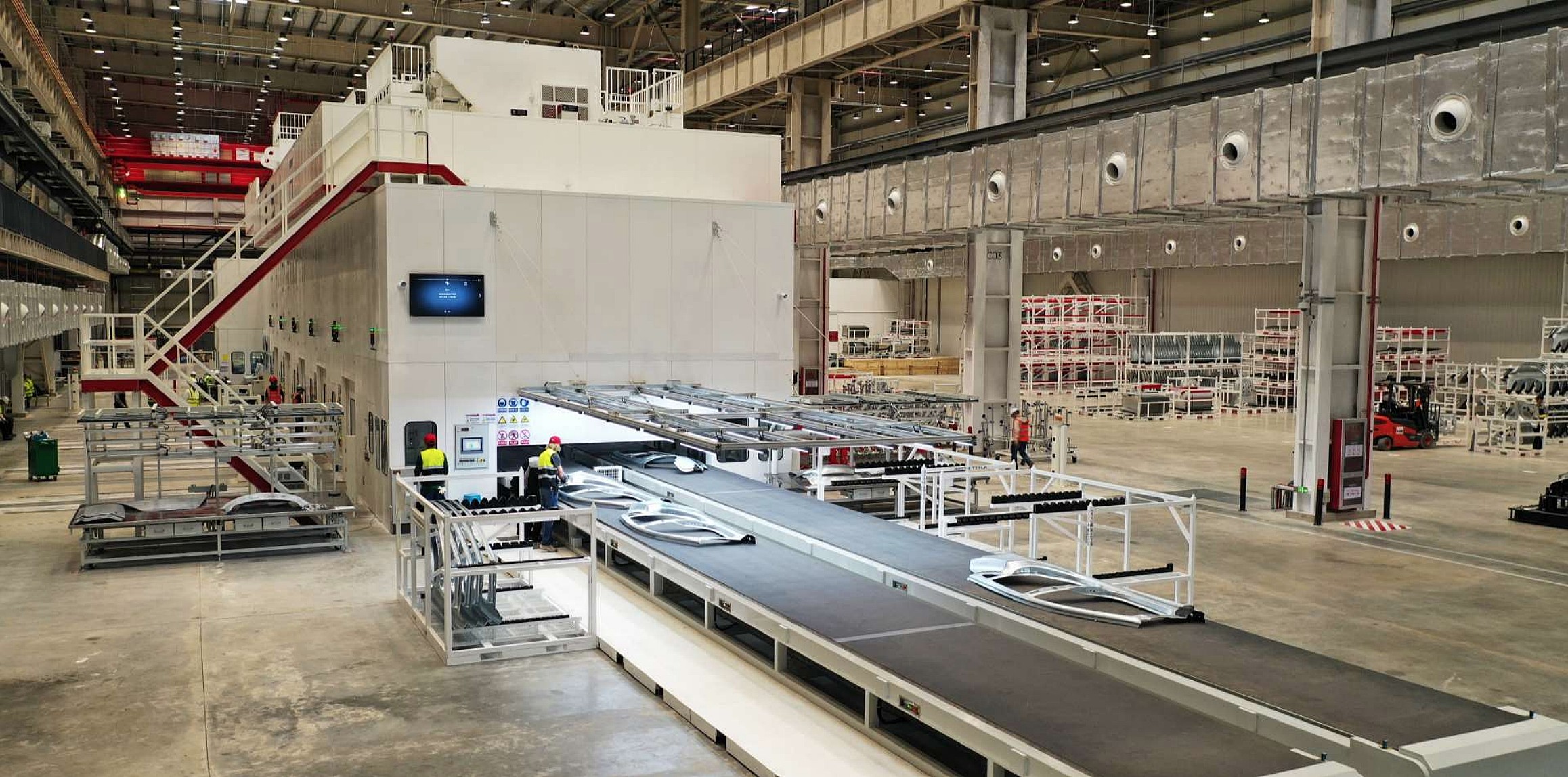

News
Tesla lands ‘Alien Dreadnought’ contract for Giga Berlin
Tesla has inked a deal with Israel’s Electra Group and its subsidiary, M&E Polska, to perform electromechanical work at the Giga Berlin production facility. The use of electromechanical equipment in automotive manufacturing is frequently related to the use of robotic weld guns, which entails automation in the production process of Tesla’s electric cars. The contract could turn Giga Berlin into Tesla’s next attempt at an “Alien Dreadnought” facility.
The work will be performed by the subsidiary, which is based out of Poland. The deal, which was first reported by The Algemeiner, is worth $80 million.
“We are proud to be a partner in a strategic agreement with a groundbreaking company like Tesla, and see it as a significant milestone in Electra’s positioning as a leading player in the electromechanical field in Europe,” CEO of Electra, Itamar Deutscher, said.
Interestingly enough, Robotics.org indicates that in automotive manufacturing, electromechanical actuators are used in the operation of robotic weld guns. The weld guns “mainly perform spot welding of stamped sheet metal for automotive chassis,” which would infer that Tesla is preparing an automated production process of the Model Y. The company has already indicated that it will initially build the electric crossover at Giga Berlin.

The Model Y is the subject of an entirely new manufacturing process for Tesla. The main goal was to eliminate the massive influx of parts that past models have utilized for their chassis. Tesla managed to eliminate 69 pieces from the chassis of the Model Y, and it is now comprised of a one-piece structure that is built with a large stamping machine. This new structure was highlighted in a teardown of the Model Y performed by Sandy Munro.
Tesla is using a stamping machine for the manufacturing of the Model Y in Fremont at the company’s main production facility. It also plans to begin using a stamping machine at Giga Shanghai in China when the second phase of the facility, which is responsible for Model Y production, is completed.

Electromechanical work relates to mechanical devices that are electrically operated. This could include production equipment at the facility that could automate the manufacturing processes of Tesla’s electric vehicles in Berlin.
CEO Elon Musk has indicated for years that Tesla is working toward more efficient production methods within its Gigafactories. Ultimately, increased manufacturing efficiency would lead to a higher production rate, and Giga Berlin is targeted to build at least 500,000 cars a year. Production is scheduled to begin in July 2021.
Musk has also indicated for an extended period that Tesla’s production facilities will appear to be “alien dreadnought” plants instead of “factories.” The goal is to increase automation technology and manufacturing efficiency as the company’s vehicles increase in demand.
Tesla continues to work toward increasing manufacturing performance, and the company has been vocal for its need for new talent to help in their efforts. During the company’s most recent Earnings Call, Musk requested talented individuals to help with solving manufacturing issues at any of its plants. Automation and engineering of the production lines could improve build quality and annual output volumes.

News
Tesla FSD fleet is nearing 7 billion total miles, including 2.5 billion city miles
As can be seen on Tesla’s official FSD webpage, vehicles equipped with the system have now navigated over 6.99 billion miles.

Tesla’s Full Self-Driving (Supervised) fleet is closing in on almost 7 billion total miles driven, as per data posted by the company on its official FSD webpage.
These figures hint at the massive scale of data fueling Tesla’s rapid FSD improvements, which have been quite notable as of late.
FSD mileage milestones
As can be seen on Tesla’s official FSD webpage, vehicles equipped with the system have now navigated over 6.99 billion miles. Tesla owner and avid FSD tester Whole Mars Catalog also shared a screenshot indicating that from the nearly 7 billion miles traveled by the FSD fleet, more than 2.5 billion miles were driven inside cities.
City miles are particularly valuable for complex urban scenarios like unprotected turns, pedestrian interactions, and traffic lights. This is also the difference-maker for FSD, as only complex solutions, such as Waymo’s self-driving taxis, operate similarly on inner-city streets. And even then, incidents such as the San Francisco blackouts have proven challenging for sensor-rich vehicles like Waymos.
Tesla’s data edge
Tesla has a number of advantages in the autonomous vehicle sector, one of which is the size of its fleet and the number of vehicles training FSD on real-world roads. Tesla’s nearly 7 billion FSD miles then allow the company to roll out updates that make its vehicles behave like they are being driven by experienced drivers, even if they are operating on their own.
So notable are Tesla’s improvements to FSD that NVIDIA Director of Robotics Jim Fan, after experiencing FSD v14, noted that the system is the first AI that passes what he described as a “Physical Turing Test.”
“Despite knowing exactly how robot learning works, I still find it magical watching the steering wheel turn by itself. First it feels surreal, next it becomes routine. Then, like the smartphone, taking it away actively hurts. This is how humanity gets rewired and glued to god-like technologies,” Fan wrote in a post on X.
News
Tesla starts showing how FSD will change lives in Europe
Local officials tested the system on narrow country roads and were impressed by FSD’s smooth, human-like driving, with some calling the service a game-changer for everyday life in areas that are far from urban centers.

Tesla has launched Europe’s first public shuttle service using Full Self-Driving (Supervised) in the rural Eifelkreis Bitburg-Prüm region of Germany, demonstrating how the technology can restore independence and mobility for people who struggle with limited transport options.
Local officials tested the system on narrow country roads and were impressed by FSD’s smooth, human-like driving, with some calling the service a game-changer for everyday life in areas that are far from urban centers.
Officials see real impact on rural residents
Arzfeld Mayor Johannes Kuhl and District Administrator Andreas Kruppert personally tested the Tesla shuttle service. This allowed them to see just how well FSD navigated winding lanes and rural roads confidently. Kruppert said, “Autonomous driving sounds like science fiction to many, but we simply see here that it works totally well in rural regions too.” Kuhl, for his part, also noted that FSD “feels like a very experienced driver.”
The pilot complements the area’s “Citizen Bus” program, which provides on-demand rides for elderly residents who can no longer drive themselves. Tesla Europe shared a video of a demonstration of the service, highlighting how FSD gives people their freedom back, even in places where public transport is not as prevalent.
What the Ministry for Economic Affairs and Transport says
Rhineland-Palatinate’s Minister Daniela Schmitt supported the project, praising the collaboration that made this “first of its kind in Europe” possible. As per the ministry, the rural rollout for the service shows FSD’s potential beyond major cities, and it delivers tangible benefits like grocery runs, doctor visits, and social connections for isolated residents.
“Reliable and flexible mobility is especially vital in rural areas. With the launch of a shuttle service using self-driving vehicles (FSD supervised) by Tesla in the Eifelkreis Bitburg-Prüm, an innovative pilot project is now getting underway that complements local community bus services. It is the first project of its kind in Europe.
“The result is a real gain for rural mobility: greater accessibility, more flexibility and tangible benefits for everyday life. A strong signal for innovation, cooperation and future-oriented mobility beyond urban centers,” the ministry wrote in a LinkedIn post.
News
Tesla China quietly posts Robotaxi-related job listing
Tesla China is currently seeking a Low Voltage Electrical Engineer to work on circuit board design for the company’s autonomous vehicles.

Tesla has posted a new job listing in Shanghai explicitly tied to its Robotaxi program, fueling speculation that the company is preparing to launch its dedicated autonomous ride-hailing service in China.
As noted in the listing, Tesla China is currently seeking a Low Voltage Electrical Engineer to work on circuit board design for the company’s autonomous vehicles.
Robotaxi-specific role
The listing, which was shared on social media platform X by industry watcher @tslaming, suggested that Tesla China is looking to fill the role urgently. The job listing itself specifically mentions that the person hired for the role will be working on the Low Voltage Hardware team, which would design the circuit boards that would serve as the nervous system of the Robotaxi.
Key tasks for the role, as indicated in the job listing, include collaboration with PCB layout, firmware, mechanical, program management, and validation teams, among other responsibilities. The role is based in Shanghai.
China Robotaxi launch
China represents a massive potential market for robotaxis, with its dense urban centers and supportive policies in select cities. Tesla has limited permission to roll out FSD in the country, though despite this, its vehicles have been hailed as among the best in the market when it comes to autonomous features. So far, at least, it appears that China supports Tesla’s FSD and Robotaxi rollout.
This was hinted at in November, when Tesla brought the Cybercab to the 8th China International Import Expo (CIIE) in Shanghai, marking the first time that the autonomous two-seater was brought to the Asia-Pacific region. The vehicle, despite not having a release date in China, received a significant amount of interest among the event’s attendees.








